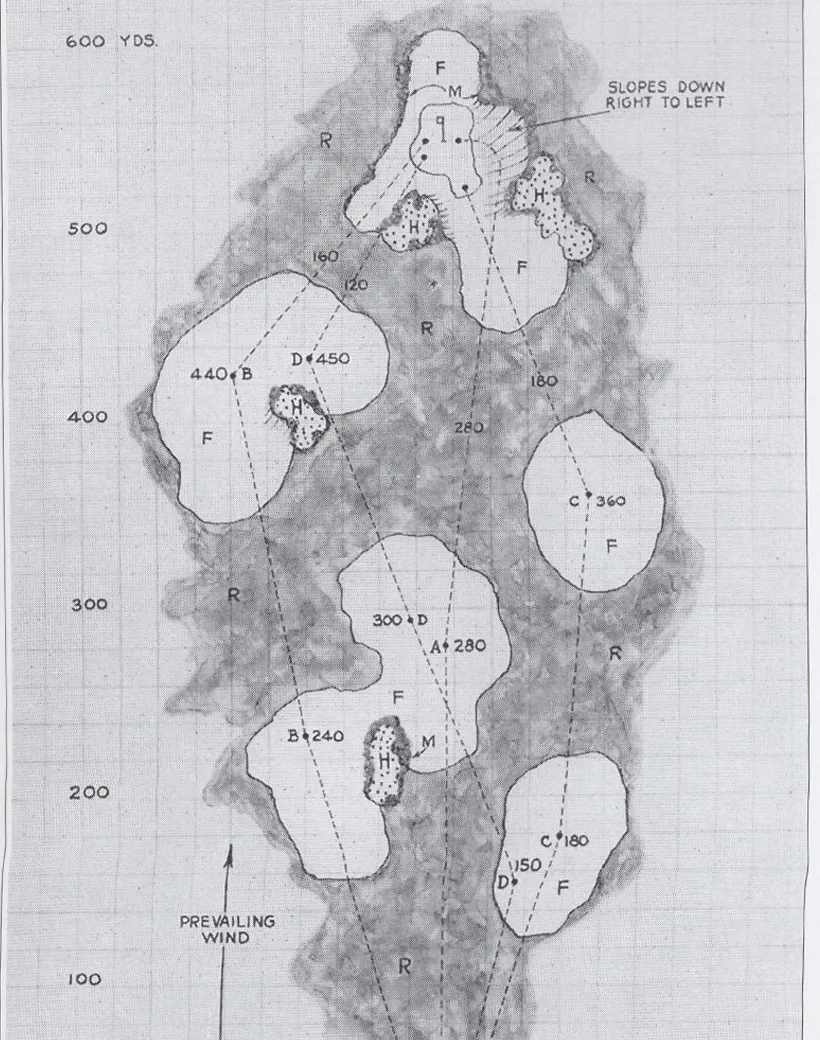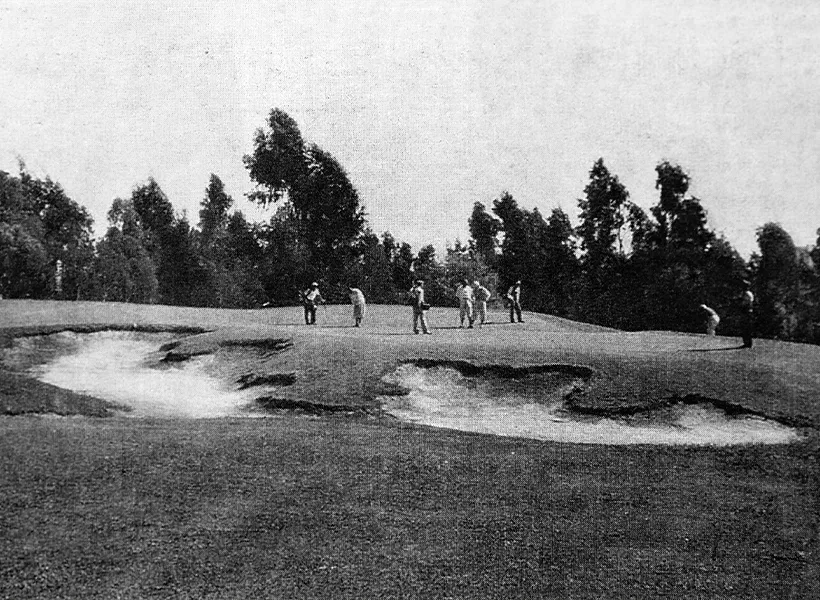George C. Thomas
The Philadelphia financier, U.S. Army captain, and rose breeder who, in the 1920s, created a series of masterpieces in California, including Riviera, L.A. North, and Bel-Air. His designs feature forward-thinking elements that allow one course to be many.

October 3, 1873, Philadelphia, Pennsylvania
February 23, 1932, Beverly Hills, California
The George Thomas Dream 18
What to Know About George C. Thomas Jr. (ft. Geoff Shackelford)
George Thomas in Los Angeles | Presented by The USGA
George C. Thomas, often called by his nickname “The Captain,” was born in Philadelphia, where he played golf from an early age. After graduating from the University of Pennsylvania in 1894, he joined his father’s investment banking firm Drexel & Company. Thomas’s passion for golf course design likely began at his family estate, where he spent his free time crafting his own golf course. Later he sold this course to a group of golfers, who converted it into Whitemarsh Valley Country Club (1908). Thomas’s first formal design project came at Marion Golf Club (1904), a small nine-holer near the coast of Massachusetts.
As a Philadelphian, Thomas was surrounded by some of the most innovative minds in golf course design — members of what we now call the “Philadelphia School of Golf Architecture.” He learned from established names such as A.W. Tillinghast, William Flynn, George Crump, and Hugh Wilson by observing their work in the Northeast.
In 1919, after his service in World War I, Thomas moved to California in search of better conditions for growing and hybridizing roses, one of his lifelong passions and areas of expertise. Thomas is said to have cultivated more than a thousand types of roses during his time as a botanist.
Upon his arrival in California, Thomas joined Los Angeles Country Club. Among his early designs in the Golden State were La Cumbre (1920) and Red Hill (1921). These projects marked the beginning of Thomas and Bell’s partnership, one that produced many successful collaborations on the West Coast. In the middle of the decade, Thomas, alongside Bell, designed Ojai Valley Inn and Spa (1925). Over the next handful of years, the duo would work together to create timeless Southern California courses Bel-Air (1926), Riviera (1927), and Los Angeles North (renovation, 1928).
In 1930, Thomas completed his final design, Stanford University Golf Course, marking the end of a phenomenal career. He passed away after suffering a heart attack at his home in Beverly Hills in 1932.
Los Angeles Country Club (North Course)
A dramatic property, a near-flawless design by George Thomas, and a stellar restoration by Gil Hanse make LACC North one of the best courses in the U.S.
Los Angeles Country Club (North Course)
Riviera Country Club
While some of George Thomas and Billy Bell’s work has been lost in recent decades, Riviera remains one of the most fascinating examples of Golden Age golf architecture
Riviera Country Club
Bel-Air Country Club
Bel-Air is George Thomas and Billy Bell’s most impressive feat of construction, a sporting course carved out of a series of severe Los Angeles canyons
Bel-Air Country Club


Leave a comment or start a discussion
Engage in our content with thousands of other Fried Egg Golf Members
Engage in our content with thousands of other Fried Egg Golf Members
Get full access to exclusive benefits from Fried Egg Golf
- Member-only content
- Community discussions forums
- Member-only experiences and early access to events



























Leave a comment or start a discussion
Lorem ipsum dolor sit amet, consectetur adipiscing elit. Suspendisse varius enim in eros elementum tristique. Duis cursus, mi quis viverra ornare, eros dolor interdum nulla, ut commodo diam libero vitae erat. Aenean faucibus nibh et justo cursus id rutrum lorem imperdiet. Nunc ut sem vitae risus tristique posuere. uis cursus, mi quis viverra ornare, eros dolor interdum nulla, ut commodo diam libero vitae erat. Aenean faucibus nibh et justo cursus id rutrum lorem imperdiet. Nunc ut sem vitae risus tristique posuere.